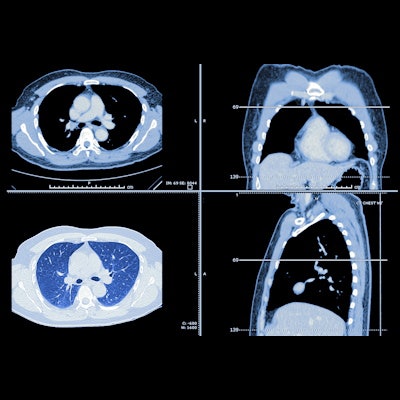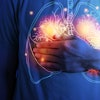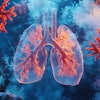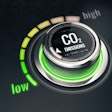
The American College of Radiology (ACR) will release updates to its Lung-RADS quality assurance tool for lung cancer screening CT reporting and management in the fall of 2022, according to a May 3 presentation at the American Roentgen Ray Society (ARRS) meeting in New Orleans.
The updated metric will further refine how clinicians can categorize and track lung cancer, said presenter Dr. Debra Dyer of National Jewish Health in Denver, CO.
"Clinical outcome of lung cancer is related to stage at time of diagnosis," she said. "Lung cancer is survivable if it's found early."
Lung cancer is the number one cause of cancer death in both men and women, according to Dyer. The aim of screening is to find lung cancer as early as possible, which boosts a patient's survival rate, Dyer said: Only 16% of lung cancers found on routine clinical care are stage I disease, but with screening, 55% to 85% of detected cancers are stage I.
In 2014, the ACR developed and released the Lung-RADS system in order to standardize lung cancer screening CT interpretations and support effective monitoring of patient outcomes. In 2019, the college updated the Lung-RADS metric in the following ways:
- Perifissural nodules larger than 10 mm are likely lymph nodes and do not need interval follow-up CT. They were recategorized as Lung-RADS 2 (benign).
- Pure ground-glass nodules up to 3 cm in size do not need interval follow-up CT; they were also recategorized as Lung-RADS 2. (Those larger than 3 cm are still Lung-RADS 3, i.e., probably benign.)
- For new large nodules that may be caused by infection, one-month follow-up interval CT may be recommended (according to management recommendations for Lung-RADS 4B).
This coming fall, Lung-RADS will be updated again, and Dyer outlined the changes in the list below.
- Atypical pulmonary cysts (multilocular cyst on baseline screen or thin- or thick-walled cyst that becomes multilocular) will be recategorized as Lung-RADS 4A.
- Atypical pulmonary cysts (thick-walled cyst with growing wall nodularity/thickness or growing multilocular cyst) will be recategorized as Lung-RADS 4B.
- Endobronchial nodule (presence of air) will be recategorized as Lung-RADS 2, with 12-month follow-up at annual low-dose CT screening.
- Endobronchial nodule (segmental or more proximal, absence of benign features) will be recategorized as Lung-RADS 4A, with three-month low-dose CT follow-up.
- Persistent endobronchial nodules will require further evaluation with diagnostic CT, PET/CT, tissue sampling and will be recategorized as Lung-RADS 4B.
- Costal pleural nodules less than 10 mm will be recategorized as Lung-RADS 2, with 12-month annual low-dose CT screening follow-up.
Hopefully this update, combined with the U.S. Preventive Services Task Force's 2021 low-dose CT lung cancer screening recommendation -- which lowered the start age for screening from 55 to 50, reduced smoking history from 30 pack years to 20, fixed the upper age limit for screening to 80, and set the years since quitting smoking at 15 -- will improve screening and capture more eligible individuals, Dyer said, increasing the relative percentage of persons eligible by 87%.
"The [USPSTF's] new strategy will help address racial disparities, particularly in Blacks and Hispanics, with relative increase in eligibility of 107% and 112%," she noted.
Finally, Dyer offered suggestions for optimizing low-dose CT lung cancer screening, including ensuring high quality, appropriate imaging is performed; making use of Lung-RADS and providing clear follow-up recommendations to referring providers; offering clear recommendations to providers for management of incidental findings, and educating healthcare providers who interact with patients at high risk of lung cancer about the disease.
And don't forget to encourage patients to stop smoking, she urged.
"[Optimizing lung cancer screening means optimizing] smoking cessation efforts," she said. "Reviewing CT findings with patients is an important 'teachable moment.' "





















